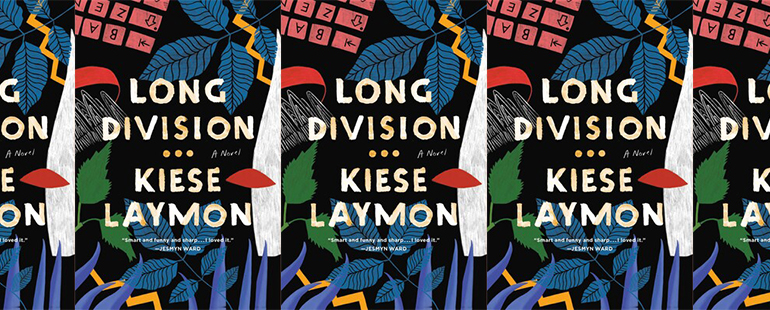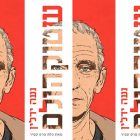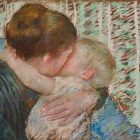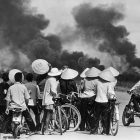The Revision of Stories in Long Division

Late last year, Kiese Laymon published an essay titled “Why I Paid Tenfold to Buy Back the Rights for Two of My Books.” The essay is the prologue to the re-released edition of his essay collection How to Slowly Kill Yourself and Others in America, the first of two rereleases he has published this year. Laymon has always talked about the importance of stories, for himself and for his peoples; in the essay, Laymon talks about how much re-reading books taught him, and how every friendship in his “adult life [has] been forged by books,” as well as how he “literally found radical friendship in the authors and texts I imaginatively met.” In re-releasing his first two books, the aforementioned essay collection as well as his debut novel, Long Division, Laymon gets to reread, and revise, books that he wrote to and for his peoples.
Long Division, re-released earlier this month, is split into two books. In “Book One,” we see a kid named City living in 2013 who has just found a book titled Long Division; the book, which is set in 1985, has no author, but its main character is also named City, and it seems to be prophetic. After going viral on YouTube, City is sent to his grandmother’s house outside of town, where a girl named Baize Shepherd is missing; Baize, too, appears in the book City has found. “Book Two” follows the 1985 version of City as he and his friend and crush, Shalaya Crump, find a way to travel in time to 2013, where they run into Baize (the authorless Long Division is present in “Book Two,” as well). The pair ends up traveling into the past, too, to help another time traveler as they all try to reckon with and rescue people from their past.
When reading the re-release of Long Division, you can easily draw parallels between time traveling to change your own story for the better and the process of revising your writing, trying to fine-tune the story you write to and for your people. In revising this book, about Black teenagers who time travel to see their family in the past, present, and future, Laymon gets to relive the experience of creating and being in his novel, in a world he created to and for his peoples, in a book that has teenagers talking to generations past and future, and he gets to revise conversations his characters have with those different generations, conversations he has with his peoples.
In Book One, for example, when City is sitting by his grandmother’s house with his best friend and reading Long Division, he says he feels as “close to a real character as I had ever felt . . . we started rereading Long Division from the beginning, knowing that all we needed to know about how to love better in Mississippi was in our hands.” In this moment, City is reading a book outlining an alternate timeline of his life, one with both him and Baize in it; he is also waiting to be in a different time, a time when he and Baize and his peoples can interact, and this is helping him learn how to live and love better. In revisiting this world, this book, Laymon is able to relive and revise these conversations to learn how to live and love better himself.
“How do you get good at love when your family disappeared and every day it feels like you and your friends are getting written off the face of the earth?” Laymon writes. In most of his work, we see him creating texts that work toward bringing his peoples to the page, allowing them to take their rightful spot there while also teaching himself and others how to love. In Long Division, we see also his peoples time-traveling—revising—in order to love better and share a better world together.
In “Book Two” (which, like with an old-school tape cassette, requires you to flip your book over to start), Baize is present, but her parents have disappeared. Baize’s most important possession is her computer, which is where she keeps all her writings and songs. Like City (and Laymon) we see how she cherishes her stories, her writings. Baize writes to deal with the disappearance of her parents. She tries to write her pains out, to revise her thoughts, to write a world with her peoples still in it, where she can learn to love the world and herself better. She reads Long Division in this way, as well: “There’s something painful in that book,” she says. “Real painful. And I just don’t feel like reading to the end and finding out what it is.” She still wants to hang onto the book, though, “Because it’s mine . . . Whatever is wrong with that book, I wanna be the one to find out before anyone else does. It’s mine.” By claiming possession of the book, Baize is claiming possession of her own story—much like how in buying back the rights to his first books, Laymon is reclaiming his art, reclaiming his friends, reclaiming his stories and the conversations he has with his peoples.
As the characters travel through time, they reclaim the ability to revise their stories, as well. The City of “Book Two” travels to the past to meet his grandfather, which he wasn’t able to do in his present—his grandfather was killed before he was born. City now gets to flesh out that story. He can see his grandfather on the day before he was killed, then see him after he is murdered. In witnessing these moments, City can revise his understanding of his family, of their trauma, of the stuff “that can’t never really be cleaned the right way,” in order to keep working toward making the hard changes in the present and the past to better love himself and his peoples—just like how Laymon works on his own revisions. As he writes in the revision of the essay, “Da Art of Storytellin’ (A Prequel),” he needs to “write to be a decent human being.” While Laymon is writing about how City is revising to better understand his family’s trauma, and to better love himself and his family, Laymon is trying to do the same for himself, revising his story with City—both Black Mississippi authors working for their peoples, working to better love, at the same time, with the same book.
Similar to how Baize isn’t ready to read Long Division and see the fate of her character and family, however, City isn’t ready to examine his future, particularly as he and Shalaya’s paths continue to diverge further and further from each other. He doesn’t know how to preserve a present where he and Shalaya can still love each other, or how to preserve a Long Division in which neither of them gets written out of the other’s world. And revising the past, changing the story—even if it’s for the betterment of others—costs him time in the present with the peoples he loves.
Paths and friendships are forever altered by the characters’ personal revisions. When Shalaya talks about how it hurts to change their past and future, though, since it affects her relationship with City, City responds by explaining how he has realized that pain, the one that comes with painful, meaningful revision, is how they know they changed “the future in a special meaningful way.” The characters made the tough choices, the tough revisions, to the stories of their lives. Even though they’ve changed their futures, and will be living in different/separate worlds due to how they’ve revised their personal pasts, they try to take solace in the fact that they will be able to come back to the present—Long Division is their lives, “our book.” Having their stories written down, revised, read, and reread means they haven’t been written off the face of the earth. And they have possession of their story, metaphorically and physically, which allows them to revisit their friends and their peoples. This is why Laymon wanted to revisit and revise his first two books now, having grown into a better writer, a writer with more creative control: it is his story. It is his peoples’ story.
When City sits with his grandma at the end of “Book Two,” she tells him that beyond the physical, the way their peoples gets “disappeared” is by words. She says, “Everything that makes people we love disappear can make people what?” City responds: “Reappear.” City ends the book by reading and writing and revising. He “thought about what people like Shalaya, Baize, Evan, and me needed to read in school to prepare to fight, love, and disappear. And I forgot about that. And I wrote more. And the more I wrote and erased, the more I felt Baize and other characters slowly—word by word, maybe even sense by sense—coming back.” This act, as much as any in the past or the future that City had taken, keeps him connected to his peoples. He is recording, revisiting, revising a world where they are all together.
In his preface to How to Slowly Kill Yourself and Others in America, Laymon writes, “Securing the rights to my books, revising them, and publishing them the way they want to be published are the most loving acts I could do for my work, my body, and my Mississippi.” Long Division ends with a sentence that has no punctuation, and which leads to blank pages: “Hand in hand in hand in hand, deep in the Mississippi underground, we opened our eyes in that lavender darkness and taught each other how to revise until all of our characters were free.” This sentence mirrors the ending of Laymon’s essay “You Are the Second Person,” also published in the re-released collection: “You look down and you keep on writing, revising, reading, reckoning, working . . . because that’s what real black writers do.” Laymon has tackled revising this novel again because his characters weren’t as free as he wanted. He has tackled revising this novel again because he wanted to learn how to love better. He has tackled revising this novel again because he wanted to write his characters back onto the face of the earth with him. This is why so many of us read and write and revise—we do the hard work, the painful work, to meaningfully free our characters, our community, our peoples, and to leave them the blank pages from which they can live and dream. We continue to create, revisit, and revise to bring about a better world for us to share with all our peoples, a better world for us to love each other in.



